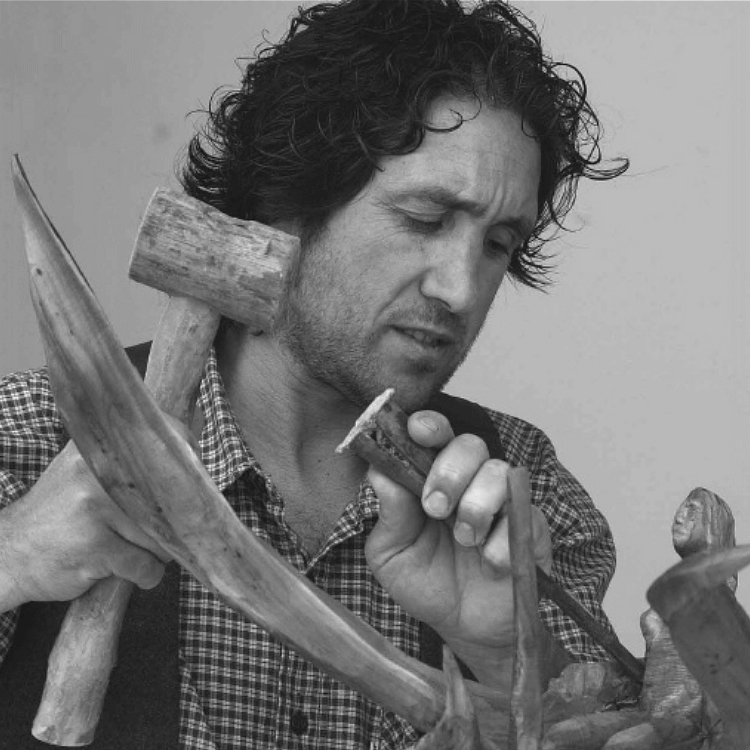Enrico Mereu

Enrico Mereu was born in Nurri on April 3, 1959. His artistic career began when he was still little more than a child: in fact, he was just six years old when he began to paint. Time passes, Enrico grows up, becomes a young prison officer and, in 1980, is sent to work in the Asinara super prison. It is here that, suspended between duty and the visceral need to express what he feels, he begins to receive the gift of wood from the sea from which he will free captive bodies and souls for years. Yes, because he doesn't sculpt, but frees. In that wood he sees the complete figure, the finished work and, skilfully and with reverential patience, eliminates only the superfluous. A philosophy that is also rediscovered in his person and in his way of approaching daily life and his neighbor. Anyone who has had the pleasure of meeting him knows that for Enrico it's not important who you are, how old you are or what your profession is, but rather what added value your perception of things can give him.
At Asinara Mereu lives torn between two strongly contrasting experiences: the responsibility of being in fact a reflection of the State in one of the most tragic places where a human being can be relegated, and the sensitivity of mind which allows him to glimpse nuances and meanings that many, too many, simply escape. This dyad causes a fracture in him which gives rise to a cascade of doubts and thoughts, a constant search for the "why" of things, our place on this earth, our role and our responsibility towards others. These sensations become clear by observing the faces and bodies he brings to light: you can see it in the face of the father who carries his children on his shoulders, in the suffering eyes of Christ, in the reassuring gesture of Saint Francis surrounded by his beloved animals. A celebration of creation which, rather than dwelling on our origins, on our past, concentrates on the immediate, effectively suggesting that life is the most precious gift we have been given.
These qualities of him have certainly not gone unnoticed, in fact there are countless appearances in group and personal exhibitions, symposiums, ceremonies. His sculptures have become part of both private and public collections of great prestige and it is possible to find his art in many places, from the town squares to the Quirinale. Despite having received numerous awards and the appreciation of various leading figures in the Italian artistic scene, including Vittorio Sgarbi, the Scultore dell'Asinara has never lost touch with his humanity.
During his stay on the island as a prison officer, Enrico met all types of prisoners, "unnamed" men and others known to the news. Salvatore Riina, Raffaele Cutolo, Leoluca Bagarella and Matteo Boe to name a few. In the same way, he was able to observe what happened on the other side of the barricade, when the judges Giovanni Falcone and Paolo Borsellino closed themselves in the guesthouse at their expense to work on one of the most important trials in the history of Italy, the one against the mafia . The comparison between good and evil, crime and justice, love and pain are undoubtedly a deep and intimate source of inspiration for the sculptor and the fact that this is tangible to anyone who looks at his creations says a lot about his language .
However, sensitivity is not synonymous with weakness, and the Scultore dell'Asinara demonstrated this with enviable strength and tenacity. His fight to stay on the island culminated in a voluntary imprisonment that lasted twenty-three days, over three weeks in which Enrico was chained to the port of Cala d'Oliva to be recognized for a right that for many had always belonged to him.
Enrico Mereu is the Asinara, the Asinara is Enrico Mereu.

